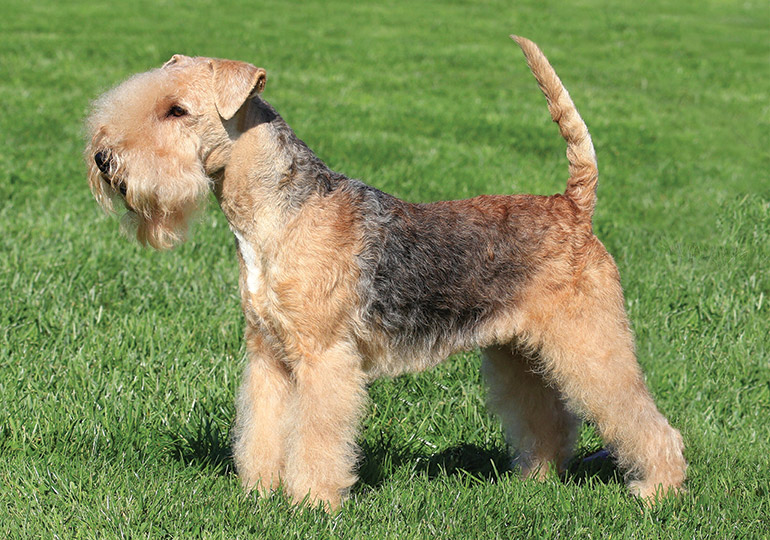Lakeland Terrier
Breed Details
Size:
Exercise Requirements:
Grooming Requirements:
6-8 kg (approx)
12-16 years (approx)

Appearance
The Lakeland is a sturdy dog, compact, free-moving, and able to cover the ground with little effort and much quickness. The dog is relatively narrow in the chest and has a broad muzzle, yet slightly narrower than the Welsh Terrier, with small, V-shaped ears. The Lakeland Terrier has a dense, wiry coat with longer hair on the legs and muzzle, often giving him a distinct beard. Colours Black and tan, blue and tan, red, wheaten, red grizzled, liver, blue or black. Small tips of white on feet and chest are undesirable but permissible. Mahogany or deep tan is not typical. The eyes are small and dark coloured and of oval shape. The nose and pads of the feet are black except in liver coloured dogs where the nose and pad colouring will be liver coloured.
History
The UK Kennel Club claims to have recognised Lakeland Terriers in 1921, whereas the Lakeland Terrier Club suggests this was closer to 1928. The Lakeland Terrier Association (now defunct) was founded in 1921. In 1925 the breed attained homogeneity following a crossbreeding with the Fox Terrier and the Airedale Terrier. The Lakeland Terrier Club was founded in 1932 and promoted the breed nationally through Kennel Club sanctioned shows. In the Lake District of the UK, the mountainous, rocky terrain is unsuitable for hunting fox on horseback, and foxes were hunted on foot. It has been suggested that the Lakeland Terrier's great stamina derives from running all day with the hounds, unlike his close cousin, the fox terrier, who would have been carried in a saddlebag to be released only when the fox had gone to earth.
Temperament
The Lakeland Terrier is an alert, lively, cheerful, loving, and affectionate dog. This breed loves children. Confident and brave, it needs unyielding training along with a firm, consistent, confident pack leader. The Lakeland Terrier likes to dig and maybe a barker, and needs to be told to hush if it becomes obsessive. This breed may be housebreak difficult to but tends to learn quite easily otherwise. Make sure that the training is full of variety and offers the dog a challenge. Dogs that are allowed to take over the home will become feisty, willful, determined, and will tend to guard their toys and food. They may become unsure around strangers. They may also become dog aggressive and bark obsessively, as they try and rule those around them.
Care/Grooming
Clipping this coat type will normally destroy the correct harsh texture and brilliant colour. The fur will become soft and the colours muted. Regular stripping strengthens the quality and texture of the coat, which, in turn, further improves the utilitarian purpose of the dog. Whether your Lakie is hand stripped and on a proper coat rotation or in a pet trim wielding the artful use of clippers and scissors, all coated breeds benefit from regular grooming rather than allowing them to regress to a state of scraggly disarray.
Breeders
Currently no Breeders in SA for this Breed

